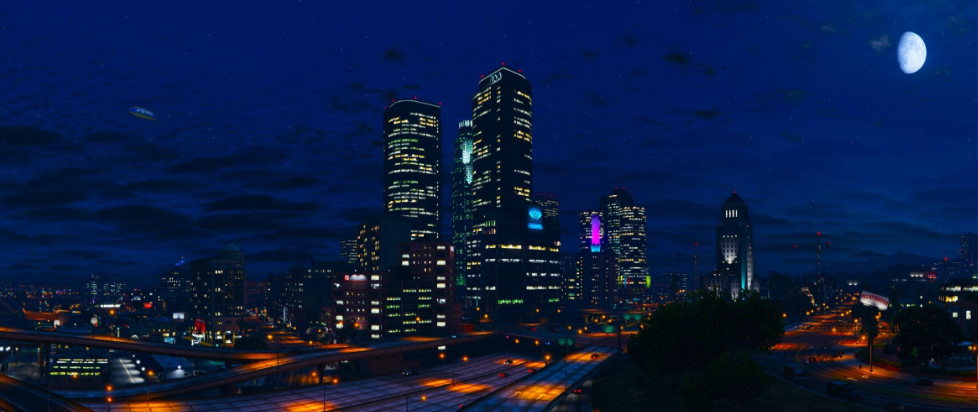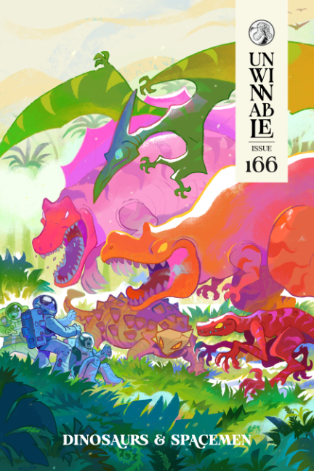
Finding Lost Santos

This column is a reprint from Unwinnable Monthly #166. If you like what you see, grab the magazine for less than ten dollars, or subscribe and get all future magazines for half price.
———
Architecture and games.
———
Since the virtual city in Grand Theft Auto 5, Los Santos, was directly patterned after the physical city in California, Los Angeles, I’ve often wondered if the structure of the urban environment affected the behavior of players in the same way. The concept that constraints and affordances in the layout of the cities that surround us can impact our actions and interactions within them is well understood, but whether or not the phenomenon can be seen in game design remains an open question. The best way to go about answering this would have to be a comparison based on some of the more important theoretical work done on the topic in recent years.
The philosopher and sociologist Michel Foucault dedicated much of his life to understanding the intricate relationship between space, place, social order and power. Taking a deep dive into his thinking, we can embark upon a fairly comprehensive comparison between Los Santos and Los Angeles, exploring the minute details of their spatial configurations, mechanisms of social control and the profound impact which these environments have on those who interact with them.
The concept of heterotopia frequently appears in the publications produced by Foucault, representing a theoretical framework for understanding spaces that exist outside the received norms of everyday life. These possess their own rules, functions and behaviors that are distinct from those of society at large. Los Santos could be said to embody a heterotopian quality, as the city operates as a simulacrum of urban life, presenting a distorted reflection of Los Angeles. The virtual city meticulously recreates versions of real-world landmarks like the Hollywood Sign, Santa Monica Pier and the Hollywood Walk of Fame, but rearranges their spatial relations to accommodate the dynamics of narrative and gameplay. This manipulation of physical space within Los Santos creates a heterotopian reality in which social norms and structures differ from those found in the reality of Los Angeles.

The concept of disciplinary power proposed by Foucault is particularly relevant when examining mechanisms of social control in both Los Santos and Los Angeles. When it comes to Los Angeles, a multifaceted system of disciplinary mechanisms operates through the architectural design, zoning regulations and surveillance infrastructure. With its distinct neighborhoods and the segregation of residential, commercial and industrial zones, the urban layout establishes spatial boundaries which regulate the movement and behavior of individuals. The extensive surveillance network in Los Angeles, encompassing cameras and police patrols, also contributes to the disciplinary power which enforces social order, influences behavior and deters potential transgressions.
In much the same way, Los Santos employs disciplinary power to shape the behavior and actions of players within the game. The city features a dense network of interconnecting streets, bridges and tunnels, forming a complex spatial matrix that both guides and restrains free movement. The presence of law enforcement and constant surveillance of course establishes a panoptic atmosphere in which the player is constantly under scrutiny. This disciplinary power permeates the gameplay experience, influencing the decisions and actions of players, mirroring the real-world mechanisms of social control present in Los Angeles.
The concept of heterogeneous space can further enhance our understanding of the comparison. Heterogeneous space refers to the coexistence of places with distinct social functions, within a broader urban context. Los Angeles exemplifies this idea through its juxtaposition of glamorous residential neighborhoods, bustling commercial districts and socioeconomically diverse regions. The spatial heterogeneity creates social divisions, inequalities and hierarchies, shaping individual experiences, interactions and the distribution of power within the city.
Los Santos exhibits many of the same heterogeneous characteristics. The city accommodates affluent neighborhoods adorned with lavish mansions, impoverished districts marked by dilapidated buildings and vibrant urban centers teeming with pedestrians and commercial activity. These contrasting spaces within Los Santos reflect the social inequalities, divisions and spatial heterogeneity found in Los Angeles. When they navigate and otherwise interact with these spaces, players are exposed to a digital representation of heterogeneous urban life, underlining the ideas proposed by Foucault concerning spatial heterogeneity and its influence on social order, because the outcome is, of course, always chaos.

Foucault proposed a concept known as technologies of the self which offers insight into the impact of these spaces on the subjectivities, identities and modes of self-expression held by their inhabitants. When it comes to Los Angeles, the physical environment, cultural institutions and social expectations of the city help to shape the self-perception, behavior and aspirations of its residents. The pursuit of success, fame and beauty which are so closely associated with Los Angeles has become an integral part of self-conception and the means through which individuals navigate and interact with the urban environment.
Players engage with various game mechanics in Los Santos that simulate technologies of the self. Customization options along the lines of clothing, vehicles and personal property allow players to mold the virtual identities of their characters and by extension themselves, expressing preferences, tastes and desired image within the game world. The structures, established norms and the overarching narrative influence their choices and actions, providing an experience in which technologies of the self are intimately intertwined with the digital environment.
Carrying out a detailed comparison of Los Santos and Los Angeles through the lens of Michel Foucault sheds light on the intricate interplay between space, place, social order and power. Both cities exhibit heterotopian qualities, deploy disciplinary power, demonstrate spatial heterogeneity and influence the subjectivity of individuals through technologies of the self. This hopefully serves to deepen our understanding of how urban spaces, physical or virtual, actively shape and govern our lives, underscoring the continued relevance of the ideas put forward by Foucault for understanding the complex dynamics of contemporary urban environments. By illuminating the connections and nuances between these two distinct yet interrelated realms, we gain valuable insight into the mechanisms of social control, construction of space and the impact of these factors on the varied experiences within the cities that surround us.
———
Justin Reeve is an archaeologist specializing in architecture, urbanism and spatial theory, but he can frequently be found writing about videogames, too. You can follow him on Twitter @JustinAndyReeve.




